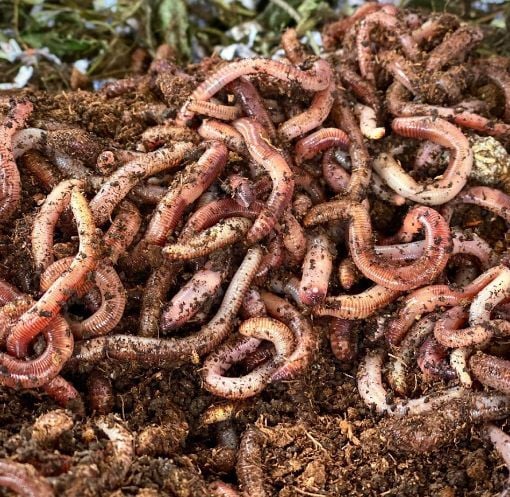Jump to Section
- Can Bread Be Composted?
- Bread in Compost: Which Ones to Use
- Composting Bread: Traditional Composting vs Vermicomposting
- Frequently Asked Questions

Can Bread Be Composted?
We’ve all been guilty of throwing out stale or moldy bread that we either bought too much of or just simply forgot about. What if Uncle Jim told you that your moldy/stale bread can be composted as a green organic material?
Bread is nitrogen rich, which is an energy source for microorganisms when composting. This will turn the kitchen scraps, baked goods, and other organic matter into black gold, which is beneficial to your garden soil.
In this blog post, Uncle Jim tells you how and when to compost bread, so you’ll never have to throw away another slice.
Bread in Compost: Which Ones to Use

When bread is broken down into small pieces, it can be composted. It quickly decomposes and adds nitrogen to your compost pile. Some breads, on the other hand, contain ingredients that negatively affect the compost bin like:
- Dairy: Dairy is biodegradable, but it takes longer to break down because of high fat content. It can also attract pests you would not want in your finished compost.
- Meat or Fish Products: Most of the sandwiches we make have meat or fish products in them. So if you have leftovers, make sure to scrape the bread before putting it in the outdoor compost pile. Animals could rummage through it and disrupt the decomposition process.
There are also stages of bread that are better for composting than others. Moldy and stale bread will break down and decompose faster than fresh bread. This is because the decomposition process has already started even before you add it to the compost pile.
Composting Bread: Traditional Composting vs Vermicomposting
Each composting method calls for a different way to put in green materials, like bread. Uncle Jim breaks it down step by step.
Adding Bread To A Regular Compost Pile
Adding food waste, such as stale bread, to your compost pile is a simple process. If you’re using the traditional composting process, follow these steps:
- Scrape the bread: You should make sure to remove any cheese or dairy product that could be harmful to the compost bin.
- Rip the bread: Shred the bread into smaller pieces so it will decompose faster.
- Make room for the bread: Clear the center of your compost and add the bread so it can build more heat and discourage from attracting pests.
- Cover the bread: Use carbon rich material to cover the top of the bread.
Adding Bread To A Worm Compost Bin

- Scrape the bread: You should make sure to remove any cheese or dairy product that could harm the compost bin.
- Rip the bread: Shred the bread into smaller pieces so it will decompose faster.
- Spread the bread on top: Now this step is different. Instead of putting the bread in the middle and covering it, spread it out across the entire compost pile. The compost worms will eventually find their way to it and begin munching.
- Cover the bread: This step is optional, but is a great way to ensure that the compost does not attract pests.
Frequently Asked Questions
Can you throw moldy bread into the compost pile?
Yes, you can definitely compost moldy bread. Mold is probably best avoided as food, but your compost pile will love it! Composting moldy bread is a good idea since mold speeds up decomposition.
If you need a more in-depth guide, our blog post about what not to feed worms will tell you everything that should not go into a compost pile.
Is bread considered to be a green or brown material?
Bread, despite its (usually) brown color, is considered a green composting material. This is due to their high nitrogen content. It provides the nutrients needed for either a traditional compost bin or a worm compost bin.
How much bread can be composted?
The typical ratio of bread and food scraps (green compost material) to dry leaves, grass clippings, and other brown materials is 1:4. This is because microorganisms require more carbon than nitrogen for energy.
We hope this has answered all of your questions about bread composting (if not, feel free to reach out to us, we would be happy to talk to you). With this newfound knowledge, you can salvage even the most moldy loaf of bread by throwing it in the compost.
Are you looking for other blog posts that talk about the world of composting? Check out our website for anything and everything about the topic!









One thought on “Can You Compost Bread”
I live in southern Michigan. I use an Earth Machine plastic
compost barrel that is open on the bottom and located
on the edge of a wood lot. At first there were lots of red worms with no effort from me. Now there are none.
Perhaps I put too much acid fruit (I love pineapple). I just learned
that’ll kill the worms. Is there another reason? Thanks